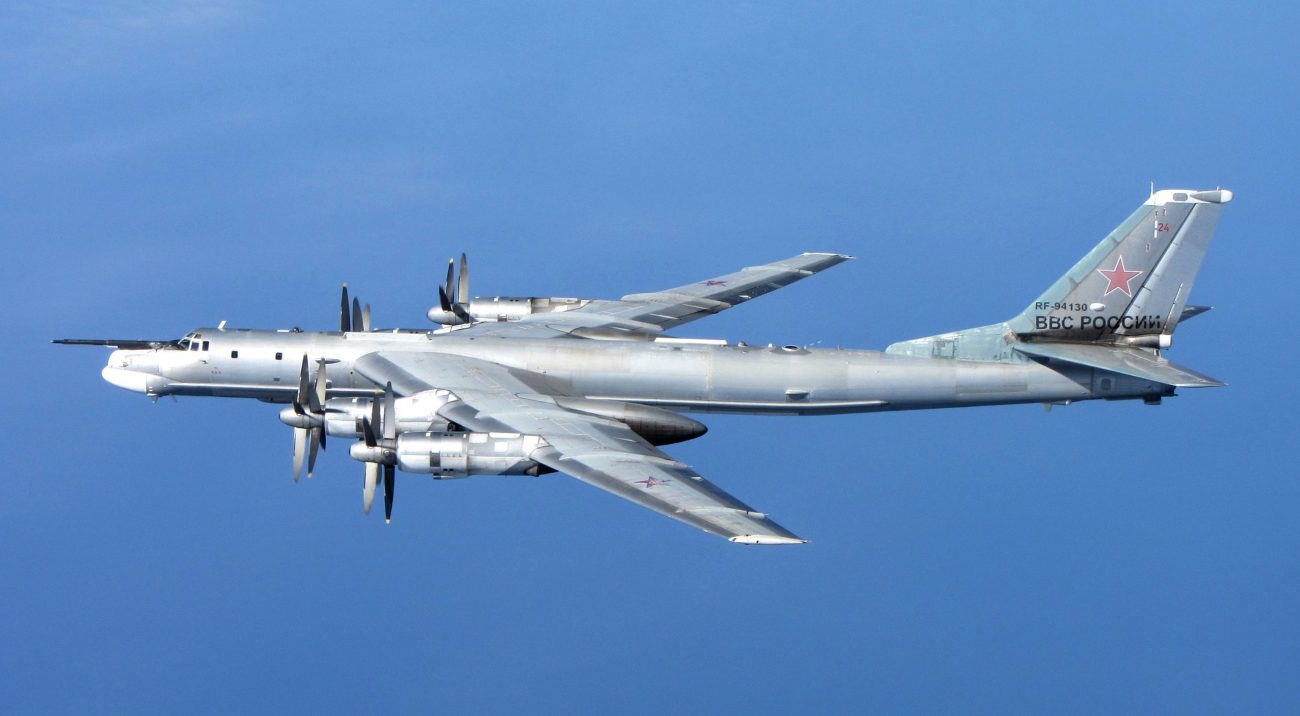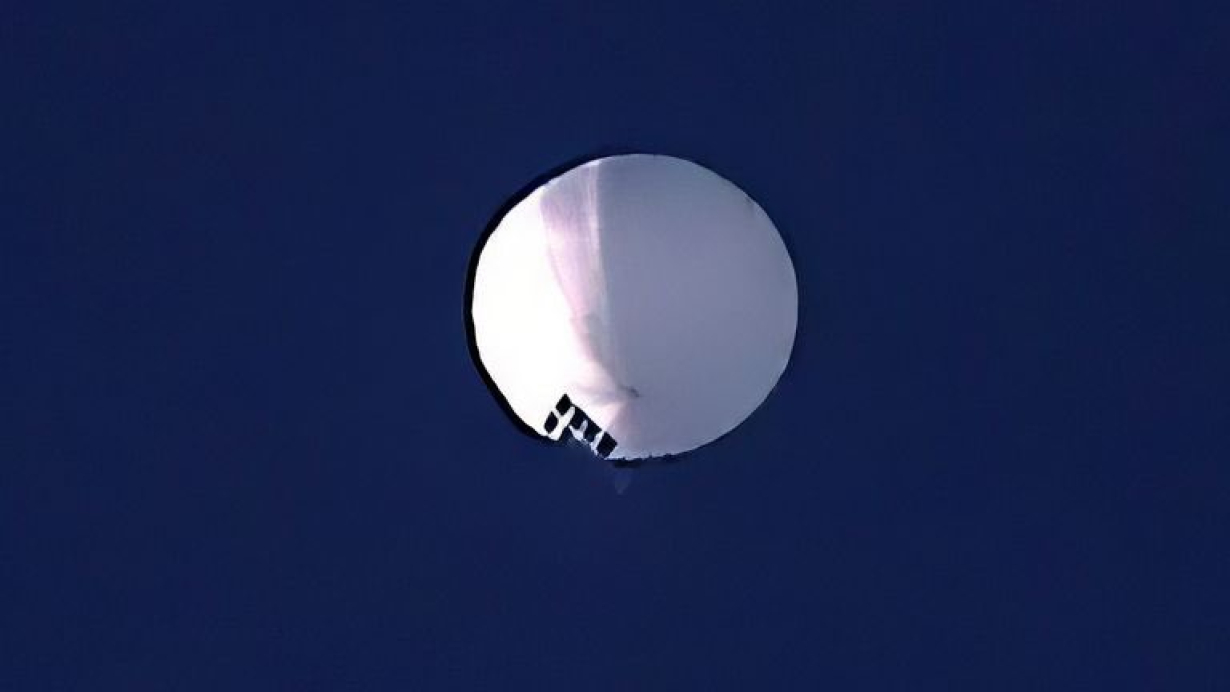At a time when the US Air Force (USAF) remains invested in shooting down Unidentified Aerial Objects (UFOs) and spy balloons over North America, Russian Tu-95 bombers accompanied by Su-35 warplanes attempted to pay a visit to Alaska.
North American Aerospace Defense Command (NORAD) announced that NORAD fighter jets were scrambled on February 13 to intercept Russian Tu-95MS strategic bombers and Su-35 jets that entered the Alaskan air defense identification zone, triggering alarms within the command.
“The Alaskan Region of North American Aerospace Defense Command (NORAD) detected, tracked, positively identified, and intercepted four Russian aircraft entering and operating within the Alaska Air Defense Identification Zone (ADIZ) on February 13, 2023,” NORAD said on Twitter.
“The Russian aircraft included TU-95 BEAR-H and SU-35 fighter aircraft,” it said.
However, the NORAD statement specified that the aircraft “remained in international airspace and did not enter American or Canadian sovereign airspace.” When entering an ADIZ, a plane must radio the air traffic controller with its intended route and final destination.
NORAD conducts routine intercept of Russian aircraft entering Air Defense Identification Zone. pic.twitter.com/rJdML4Co1x
— North American Aerospace Defense Command (@NORADCommand) February 14, 2023
Russian fighter jets regularly intrude into North American ADIZ and are intercepted and escorted by the NORAD fighter jets. In 2020, there were 60 such intercepts by NORAD.
However, the numbers have significantly come down now, with the Russian attention focused on Ukraine.
In August last year, NORAD revealed that it had detected, tracked, and identified Russian surveillance aircraft entering and operating within the Alaskan ADIZ on two different occasions.
The press service said, “This Russian activity in the North American ADIZ occurs regularly and is not seen as a threat, nor is the activity seen as provocative.”
On two separate occasions, over the past 2 days, the Alaskan NORAD Region detected, tracked and identified Russian surveillance aircraft entering and operating within the Alaskan ADIZ. The Russian aircraft did not enter American or Canadian sovereign airspace. #WeHaveTheWatch
— North American Aerospace Defense Command (@NORADCommand) August 10, 2022
While NORAD or the United States do not seem to be rattled by the unwarranted Russian incursion, the timing has generated interest in the event. Since early February, the USAF, Canadian Royal Air Force, and their joint NORAD have been fighting the menace of balloons floating over the continent.
NORAD clarified in its statement, “Russian flight activity is in no way related to recent NORAD and US Northern Command operations associated with airborne objects over North America during the last two weeks.”
However, the timing of the Russian intrusion has caused suspicions about Russia taking advantage of the US being overly invested in shooting down balloons. The incident triggered a hot discussion among netizens who have questioned the sudden surge in UFOs flying close to America.
Two American F-16 warplanes were dispatched to intercept four Russian aircraft near Alaska. Although not every Russian aircraft coming close to the Alaska ADIZ draws a response from the United States, when it does, the Air Force sends F-22 Raptors from the 3rd Wing at Joint Base Elmendorf-Richardson (JBER).
It has been quite a busy few days for the F-16 fighter jet this month that has been pressed on multiple occasions to shoot down the UFOs or alleged Chinese spy balloons hovering over different locations across the North American continent and causing a frenzy. There has recently been a surge in such incidents.

The Balloon Saga Continues Unabated
It was on February 4 that a US F-22 Raptor shot down an alleged Chinese spy balloon after over a week of tracking it over the United States and Canada.
The matter sparked tensions between the US and China, which was accused of conducting surveillance using these balloons. However, just days later, another balloon appeared over the continent, flying at 40,000 odd feet and posing a “reasonable risk to national security,” according to John Kirby, Coordinator for Strategic Communications at the White House.
The balloon was shot down over Alaska on February 10.
The controversy turned again when a UFO was spotted a day later, on February 11, over North America- this time in Canada. NORAD undertook a coordinated operation and again shot down the object. This specific object had entered Alaskan airspace a night before moving into Canada.

Another UFO spotting and mission came in quick succession on February 12. The balloon, this time flying at 20,000, was shot down over Lake Huron in Michigan. In this incident, officials said the object was shaped like an octagon with strings dangling.
Even though the incidents have generated enough controversy, newer details keep emerging over the days.
For instance, on February 13, US officials announced that they had discovered crucial electronics, including vital sensors likely used for information collection, from the alleged Chinese spy balloon that had been shot down on February 4.
Further, another major revelation was that the F-16 entrusted with the responsibility to shoot down the balloon over Lake Huron on February 12 missed the target in the first go.
Gen. Mark Milley, the chairman of the Joint Chiefs of Staff, said in a briefing that the AIM-9X Sidewinder missile missed and went into the great lake, while the second missile fired by the jet blew up the object.
The US Pentagon has stated that all these objects shot down this month were benign and did not pose a risk to the security of the region. The White House announced they could not find a connection between the alleged Chinese spy balloon shot down on February 4 and the three UFOs shot later.
- Contact the author at sakshi.tiwari9555 (at) gmail.com
- Follow EurAsian Times on Google News




